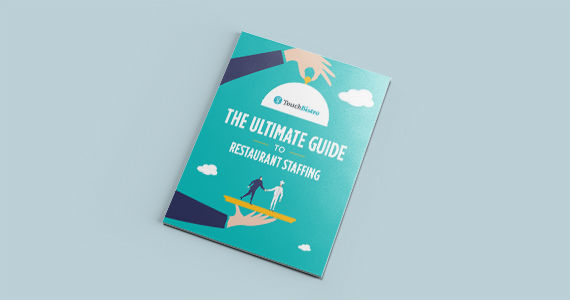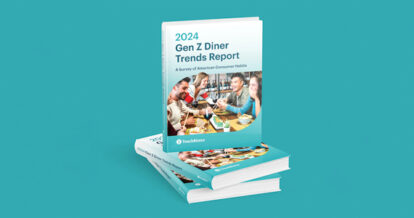If you’ve ever scheduled too many front of house staff for a shift at your restaurant, you might think that you’re reducing labor costs by simply sending staff home early. And while this is a sensible short term solution, you still need to get strategic about proactively controlling labor costs to avoid long term damage to your restaurant’s bottom line.
The hit to your bank account caused by subpar scheduling goes far beyond one overstaffed shift. With fewer tips, fewer tables, and less to do, your servers might start looking for a workplace with a higher table turnover rate and a lower staff-to-table ratio. You could end up facing the steep expense of losing – and subsequently hiring and training – new employees.
As a restaurateur, you need a long term plan for controlling and reducing labor costs. This should include an HR strategy backed by data and powered by technology. In this guide to restaurant labor costs, we’ll explore:
- What labor costs include
- How to calculate your restaurant labor cost percentage
- How to evaluate your labor costs
- How to reduce labor costs with 5 easy tips
Understanding Restaurant Labor Costs
Before you can learn how to decrease the cost of labor at your restaurant, you first need to understand what your labor expenses actually include. The key items on this list are salaries and wages, overtime pay, benefits, payroll taxes, and paid time off costs.
Your next step in reducing restaurant labor costs is to get a sense of how much money you should budget for the cost of labor, on average. Luckily, there’s a trusty number known as restaurant labor cost percentage to help you set a benchmark for your spending.
How to Calculate Your Restaurant Labor Cost Percentage
Figuring out your restaurant labor cost percentage and sticking to a healthy number will help keep your bank account in the black. Your restaurant labor cost percentage will tell you how much money you’ve paid employees in a given period of time vs. how many sales you’ve generated during that time.
Here’s a simple formula to calculate your restaurant labor cost percentage:
(Total Labor Costs for the Period / Total Sales for the Period) x 100
= Restaurant Labor Cost Percentage
Your restaurant labor cost percentage should never reach above 30%. This means for every $10 you generate in sales, you should spend no more than $3 on the cost of labor. However, keep in mind that this figure will vary depending on whether you run a quick service or fine dining restaurant, with the latter seeing higher labor cost percentages.
Tips for Evaluating Your Labor Costs
Now that you understand the basics of restaurant labor costs, you can begin the process of reducing labor costs by taking a look at your current expenses.
Calculating Your Prime Cost
Knowing your labor cost percentage is a great place to start, but it doesn’t provide you with the full picture of your restaurant’s financial health. To understand whether your cost-to-sales ratio is solid, you need to be aware of how much it costs to produce the items you sell. This is known as your prime cost, and it combines your total labor costs with your cost of goods sold (COGS).
To determine your restaurant’s prime cost, first add up your total COGS to find out how much you’re spending on the items and ingredients required to create the dishes and drinks on your menu. Here’s how to calculate COGS:
Beginning Inventory + Purchases – Ending Inventory = COGS
Your next step is to add your labor costs (remember, those expenses include salaries and wages, overtime pay, benefits, payroll taxes, and paid time off) to your total COGS to arrive at your restaurant’s prime cost:
Labor Cost + COGS = Prime Cost
Divide Labor Costs into Groups
To get a crystal clear picture of your restaurant’s expenses, you should take the time to calculate your labor costs for various categories of staff (i.e., front of house, back of house, and managers), rather than only calculating your total labor cost percentage. Or, you could split salaried and hourly employees into two larger groups to keep things even simpler. The benefit of reviewing your labor expenses in this way is that it’ll make it easier for you to target specific areas when cutting costs.

5 Easy Tips for Reducing Labor Costs
You’ve laid the groundwork – now it’s time to dive into how to reduce labor costs in your restaurant.
1. Check Your POS Labor Reports
Reviewing the labor reports from your POS system regularly against seasons, holidays, times of days, etc. will help you become a pro at scheduling the exact amount of staff you need when you need them (and not when you don’t). This is a key strategy for reducing labor costs – and avoiding boredom-induced cleaning sprees!
When you create your schedule, remember that you’re purchasing labor, not just writing a name on a calendar. This means every time you schedule an employee for a shift, you’re buying the work they’re doing. You wouldn’t buy a car without doing some research first. The same goes for staffing, which is why it’s important to dig into the details and analyze your restaurant labor cost percentage by daily and hourly trends, rather than just weekly.
Becoming familiar with your restaurant labor cost percentage alone isn’t enough to save you the big bucks. You also need to draw on average sales data from your POS and project that data forward over time to create a sales forecast. Then, using predictive staffing techniques like sales per man hour, you can calculate how much revenue your employees will likely generate in an hour, and whip up a schedule that aligns with your hourly revenue.
Keep in mind which variables might affect sales trends. Perhaps you overprojected your staffing needs during last year’s Superbowl event, and your labor report from that time can remind you not to schedule as many bartenders this year. You can also reduce labor costs in smaller ways that will build up over time, for example, by cutting back on the number of servers you schedule at 5:00 p.m., when most guests are only ordering pre-dinner drinks. Scheduling the bulk of your dinner staff just an hour later can go a long way in minimizing labor costs.
When you can’t be sure how busy your restaurant might get, placing service staff on call is a great way to navigate cost variables that you can’t determine in advance.

Learn how to hire, train, schedule, and retain restaurant staff.
2. Cross Train Your Staff
Cross training is one of the most efficient ways to make sure your restaurant employees can work multiple types of shifts and feel like they’re advancing their skills.
A host who can run food, clean tables, manage your wait list, and lull hangry guests into a placid state is a true gem. But, if they’re the only one who knows how to manage your restaurant reservation software, they’ll have to be scheduled at all times, even on slow nights. Cross training your staff can help solve this problem by reducing your reliance on specific employees. This helps you save on labor expenses because you’re not dependent on one person to do one job.
For instance, if your guest turnover is manageable Sunday through Wednesday, you might train all wait staff on how to use the reservation system. This way, they can manage reservations and walk-ins in tandem on low-volume evenings, and you can reserve hosting staff for busy nights.
Cross-training is also advantageous in situations where your restaurant gets slammed or an employee calls in sick. And, you’ll find that when you cross train, your employees will develop better relationships with more of their coworkers, which improves your team’s overall morale.

3. Keep Your Team Happy
The restaurant industry is notorious for its high employee turnover rates, which come with staggering costs of up to $150,000 per year. But, that doesn’t mean you can’t buck the trend with a solid staff retention strategy.
Keeping your employees from jumping ship is one of the best long term strategies for reducing labor costs, and it’s especially critical during a labor shortage like the one the industry is facing now. Investing in your current staff can minimize the more significant expenses of training new team members.
So, how do you keep your employees happy? Use staff reports from your POS to find out who’s selling the most or bringing in the most tips, and reward them with public recognition, a free meal, some cocktails, or – even better – paid time off. When your high performers are publicly recognized, you’ll kill two birds with one stone by making your best staff feel great while letting your other employees know how they can achieve the same success.
4. Minimize Overtime
Here’s the question: Kim has worked 40 hours, but Alex has worked 15. Who gets the extra shift? It’s obvious that Alex would be the best candidate, but if you don’t know that Kim is heading into overtime, you might pass the shift to her – which would put you in the red.
Since serving hours are fluid, clock-out times are rarely predetermined. This is why you need to monitor your employees’ hours daily. Your POS system should allow you to craft a report that includes a breakdown of hours worked by each staff member, the number of shifts they worked, and the pay they accrued for those hours, all while accounting for different roles (bartending vs. serving vs. managing). By reviewing this report daily, you keep a pulse on the changing beat of hours worked and avoid small but costly mistakes.
5. Invest in a Mobile POS
Restaurant automation technology can help you solve a lot of different business challenges, and a mobile POS is a superstar when it comes to reducing labor costs in your restaurant. A mobile POS allows staff to take orders tableside at FSRs or directly in line at QSRs. This efficient process means tables turn faster and lines move faster – all of which translates into more sales, less errors, and, of course, lower labor costs.

Learn how to hire, train, schedule, and retain restaurant staff.
You now know the main types of restaurant labor costs and how to calculate important metrics. You also understand how to reduce labor costs, and you have 5 tips in your toolkit to help you decrease your spending. By leveraging your restaurant’s POS system, cross-training your staff, and keeping your nose to the numbers, you’ll be better equipped to manage busy nights, slow nights, and staffing needs proactively.
Download your free employee handbook template
Sign up for our free weekly TouchBistro Newsletter







